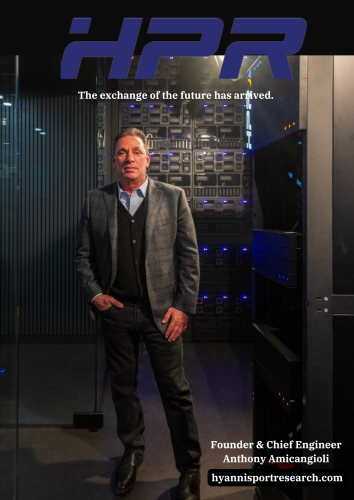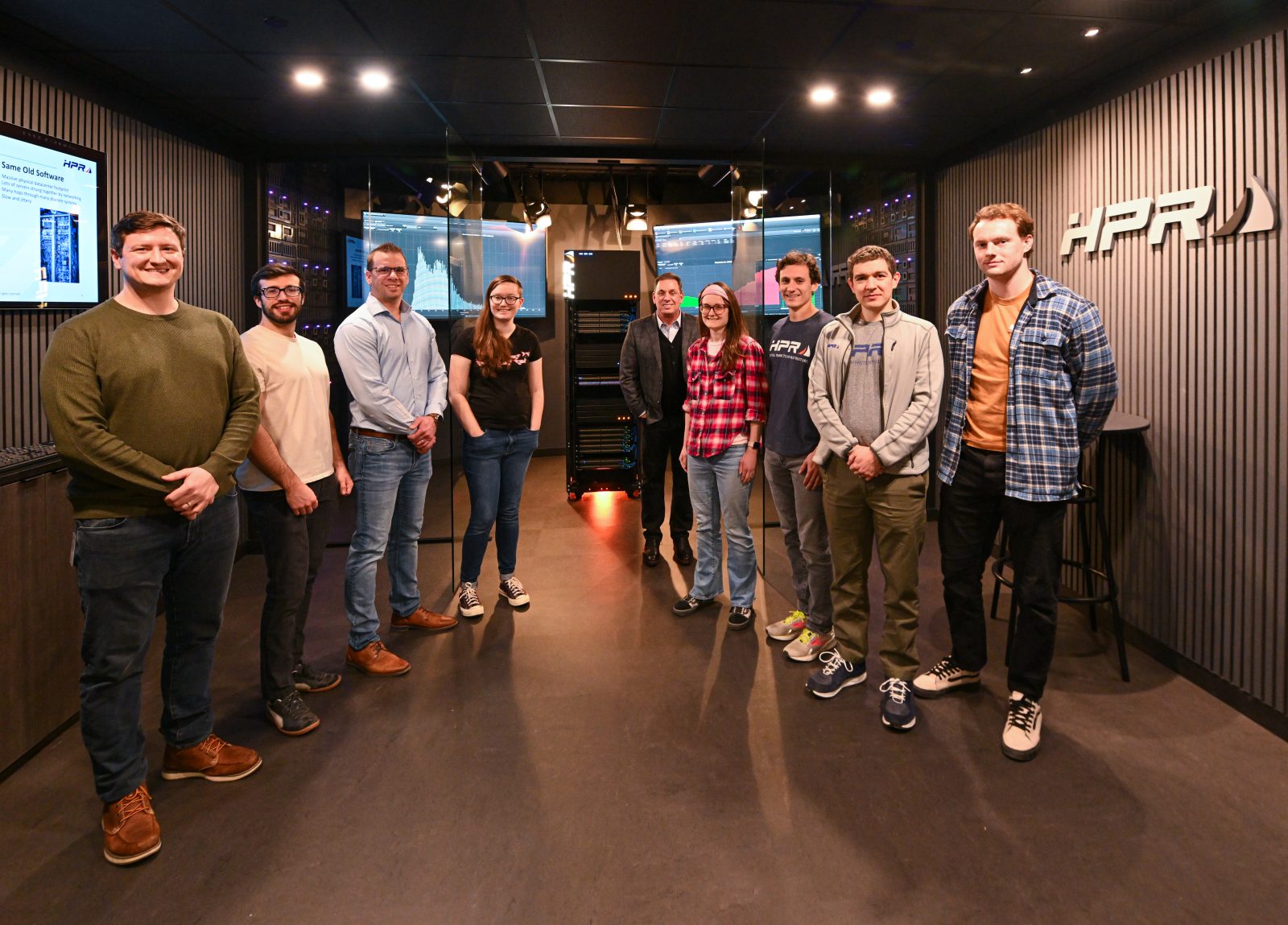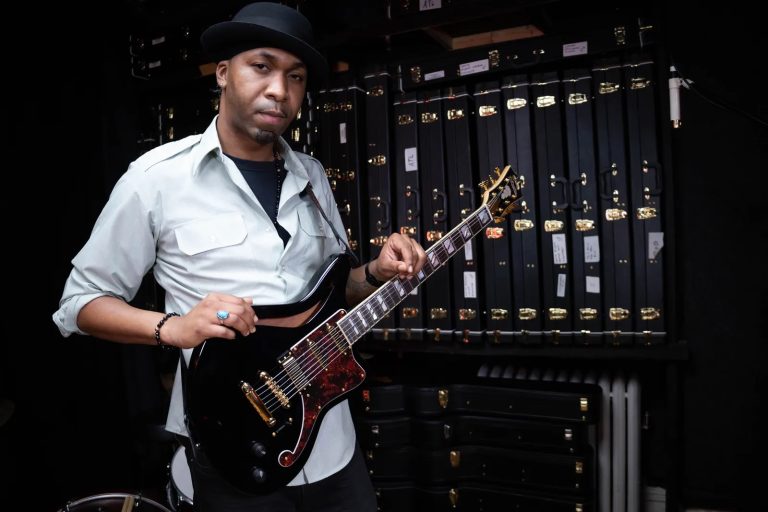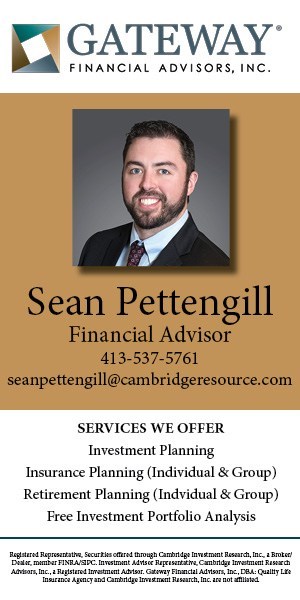Anthony Amicangioli rose from humble beginnings to create his dream business, Hyannis Port Research (HPR). The latest step in its ongoing success: the launch of ‘the exchange of the future,’ Hypercube technology.
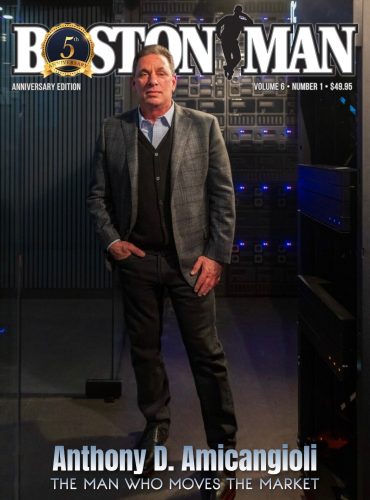
“YOU know, a Reese’s cup is peanut butter and chocolate — and it’s perfect,” says Anthony Amicangioli, founder, president, and CEO of Needham-based Hyannis Port Research (HPR). “My business ‘Reese’s cup’ is finance and technology/cloud computing. That’s the Reese’s cup that makes HPR what it is today: cloud-computing-based capital markets infrastructure.”
Amicangioli founded HPR in 2010. From a blue-collar background growing up in Newton, MA to his early dreams of entrepreneurship and fascination with engineering, he became a successful MIT graduate on a combination of drive and the ability to connect with people on their level — from entry-level engineer to global CEO.
“I remember being 14 years old, hanging out with my friends. We had this little hideout where we built electrical equipment to light and heat it in the winter. I remember carving a future company name into the place,” Amicangioli says.
“Back then, it seemed like everything technical ended with ‘-tron,’ so there it was: Amatron. It’s such a dated name now, but it’s only one letter off from Amazon! But it shows I knew what I wanted to do, even back then. I had a picture in my mind of a building, engineers working, a product being created. And I never stopped striving for that.”
After a career that saw him mix a series of jobs at early-stage start-ups, including his own — Zetari, which fell victim to the post-9/11 financial crisis — with roles at larger corporations, he felt ready to launch HPR 13 years ago. Today, HPR’s systems serve trades that make up over 15 percent of U.S. daily stock trades and operates in 80 markets globally. Amicangioli and his team recently launched what may be a game-changing technology in the finance sector, a product being dubbed “the stock exchange of the future,” Hypercube.
“The Hypercube reduces the time it takes your trades to be processed by an exchange by approximately two orders of magnitude,” Amicangioli says of the technology that debuted in June. Not only that, this technology can outperform current exchange architectures by a factor of 100 in a hardware package that’s one-tenth the size.”
This latest innovation from HPR wouldn’t shock anyone who’s followed Amicangioli’s career. However, the yin and yang of his abilities — lead engineer and architect who can get down in the trenches with his team, while also ably handling all the boardroom duties of a global CEO — are not the outcomes of good fortune. Amicangioli has built his technical and leadership abilities thoughtfully and intentionally throughout a three-decade career.
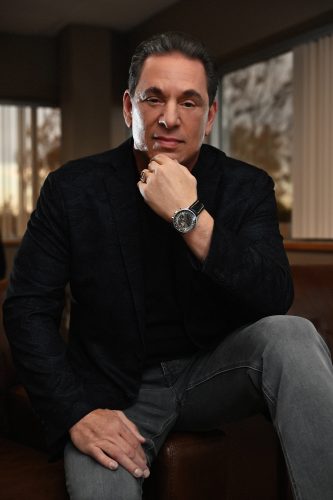
The Risk Taker
For an MIT graduate, Amicangioli took a road less traveled. “I was from a working-class family, and when I didn’t go to college right out of high school, I don’t think anybody really even noticed,” he says. “My background, in many ways, was entrepreneurial —because I went through many challenges and took a lot of extreme risks to develop myself to the point where I was ready to build a company like HPR.”
His “knack for electronics and computers” quickly put him on a strong path. “Prior to college, I was already working as an accomplished engineer,” Amicangioli says. “For example, I spent time at General Electric Aircraft Instruments, working on F-18 fighter jet cockpit test systems. Even though I was young with no degree, the often much older engineers would come to me for help with their homework so to speak. Here was this 20 year old technician helping senior engineers with their designs.”
Amicangioli’s star continued to shine at GE and other jobs before he decided to pursue a college degree.
“There was a difficult problem at GE where a consultant who had designed this multicomputer test system, messed up and quit,” he recalls. There were approximately 40 accomplished engineers working on it.
“I came in with a plan, redesigning the whole thing and challenging an alternative approach provided by group of highly respected industry consultants. I told them ‘I think we can simplify this by doing this, that, and the other.’ They followed my design and it was a success. To my amazement, they sided with the 20-year-old technician. In retrospect, I have immense respect for the courage the manger had in going with his gut with what must have been extreme risk for him. I was always wanting to push and take risks.”

He finally entered college — “five or six years after high school,” Amicangioli says — and was able to pay his own way for two years thanks to the money he’d made working.
“But, eventually, I ran out of money,” he says. “So, in my last year-plus at MIT, I continued as an unregistered student; technically a trespasser (laughs). I didn’t have any money, and financial aid apparently could not provide further assistance.’ So, I had to take two semesters as an unregistered student. I would ask the professors after final exams to, ‘Please save my grade for future reporting, I’ll be back. I’ll get registered.’ That was tough because at MIT, you slept an average of four hours a night because of the workload and you were up against the best students in the world. Meanwhile , I wasn’t really sure I was going to get the credits for all of that hard work. I took the risk that I’d find the money in the future and convince MIT to retroactively register a trespasser .” (He did, graduating with a bachelor’s degree in electrical engineering in 1992.)
Amicangioli continued taking risks when he left school. “Recently, I looked back at my career, and I never realized how aggressively I played for early-stage startups,” he says. “In fact, recently I was speaking with a group of globally successful CEO-types and COO-types. One said to me, ‘Oh yes, I’ve done some really small companies,’ and I asked, ‘What size?’ The response? ‘Oh, 200-300 people.’”
Amicangioli laughs. “Here I am, thinking an early-stage company is employee No. 1, No. 2, No. 3, No. 4,” he says.
He says that while he’d mix in consulting gigs “to make some money,” the early stages of his post-grad career were marked by “jumps from start-up to start-up to start-up — and a lot of failures.” There were some companies that tasted success: a print-on-demand equipment company producing systems “kind of like the ones you see at Staples today”; or one that Amicangioli says its services compare to “what Akamai does now.” But after seeing how the start-up game worked, he decided to launch his own business — Zetari — in 2000.
“It was cloud computing equipment and software,” Amicangioli says. “It wasn’t even called the cloud at that time. Back then, they would call it utility or grid computing. I can still remember pitching to venture capitalists.”
And the pitch worked. Shortly after founding Zetari, Amicangioli had raised $3.5 million and built a prototype. “We were among the top contestants at Interop in Las Vegas, which was a big industry show” he says. “Then in 2001, US V. Microsoft was announced, and the market started trending down. But we were out raising money.”
Amicangioli continues, “We got approved by a west-coast VC and flew back to Boston. The next day was 9/11. The rest is history. All venture capitalists immediately shut down spending after that.”
And Zetari closed not long after. Amicangioli reentered the work force. “I did a stopover at Juniper Networks. We worked on a very elite product called the ERX … I presided over some of the more elite engineers there and built up my portfolio. Interestingly, some of that technology and know-how now makes its way into what we’re doing with HPR.”
But it was another stop – for six years in New York at Lime Brokerage — where Amicangioli had his “Reese’s cup” moment. “Some classmates from MIT had been working on electronic trading. They asked me to come down and be the CTO of the company, which is very well respected in electronic trading,” he says. The experience would result in a return to his entrepreneurial roots and engineer’s heart.
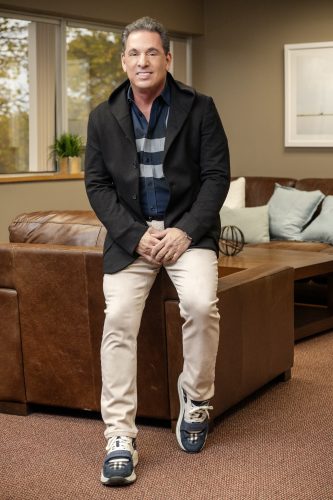
Small, Focused, Elite
Amicangioli launched HPR in early 2010. And then, a year later, things really began to take off when he secured funding from his first investor, UBS.
“HPR builds capital markets infrastructure,” Amicangioli says. “The equipment that makes up the fabric that allows you send a trade from a Robin Hood or a Schwab, and your trade goes through those systems, sending data to people so they can see what’s happening in the market; or the equipment that protects the market from blowups — risk management technology; to the actual engine in the middle where buyers and sellers are matched. HPR builds that equipment.”
Among HPR’s calling cards is its ability to improve the old software-based tech and capital market equipment by redesigning it in hardware.
“Much of it was conceived in its earliest forms in 2001, 2002,” Amicangioli says. HPR build’s out superior versions in cutting edge hardware.
“This makes using our technology faster, cheaper, more efficient, and greener. It collapses the size of the data center,” Amicangioli adds, noting the cloud-computing aspects of HPR’s business. “We’re in 80 markets globally with our risk-management systems and trading systems. We work for some of the largest banks in the country, their investment banking units. So, we manage that entire hodgepodge of systems globally with one very clean central cloud management system.”
One of the more incredible parts of this expansive work: “We’re at about 110 employees,” Amicangioli says, a very small number given the amount of technology in play. “To put that in perspective, a small simpler network switch product I worked on at Juniper networks had 365 software engineers and 57 hardware engineers. HPR does it with a very small, very focused, very elite team.”
That team — and the culture that supports it and helps it thrive — is much discussed in both financial and engineering circles. Amicangioli’s experience prior to founding HPR must have something to do with a team that feels supported by a fellow engineer but also led by a visionary executive.
“Engineers like to work for an engineer,” Amicangioli says. “It can be very challenging sometimes to be a software engineer and do all this great creative work, but then you seal it away in a de facto black box and no one sees or appreciates what you do. Our people know that I care. I still sit in on code reviews. I drive a culture that has a tremendous focus on quality. Creating that culture of, by, and for engineers has been an important factor driving our success.”
At the same time, though, Amicangioli has noticed something in today’s business culture, one that often pays lip service to collaboration while employees are lorded over by out-of-touch leaders.
“People are hungry for credible leadership,” he says. “If there’s a leader who’s leading by pure fiat and they don’t respect the process, policy, and procedures that are laid on the team, nobody gets on board. But when employees really believe in the leader, they’re hungry to get behind the leader.”
How does Amicangioli continue to keep his tight-knit team behind his leadership? “We have a lot of training in how to think about this stuff,” he says. “The vast majority of engineering shops or companies just throw a bunch of resources at the problem, come what may. HPR really does train across the team, providing views of how contemporary software architecture should be done. We message that, and people understand it. If you ask multiple people at HPR what the vision is, how we write code differently than everyone else, you’ll get the same answer from everybody.”
He also points to a concept called “hyperunification,” that plays a big role at HPR. “Think of a big company, like some of the big banks we work with. They have 50 teams writing 50 applications. The way that works is a ‘Tower of Babel’ kind of thing,” Amicangioli says. “Team A likes one programming language, and while Team B likes a different programming language, and another team likes yet another. When these things are all built, you have this mishmash of languages and technology, and none of it works well together.”
He continues, “At HPR, we have this saying: ‘There is no right one way, but one way.’ We look across this space of all these different technologies and languages we use, and we all agree on which is the best one to use. Everybody does things based on the same programming application. HPR does everything with one clean code base that everybody participates in, and this has led to extraordinary success.”
This dedication to team concept, unification, and respect for the engineers has created a company that rarely loses its highly coveted employees.
“Competition for great talent is extraordinary. Trading firms, Googles, Amazons – they know that HPR develops and trains great talent. So, they’re forever trying to pull talent out,” Amicangioli says. “They have deep pockets and can structure their deals to make them very attractive. What we find is that engineers — when they live in a shop that is of engineers and by engineers — they want to stay. The culture helps us hold a team together. We have very low turnover because people love being here and love working for HPR.”
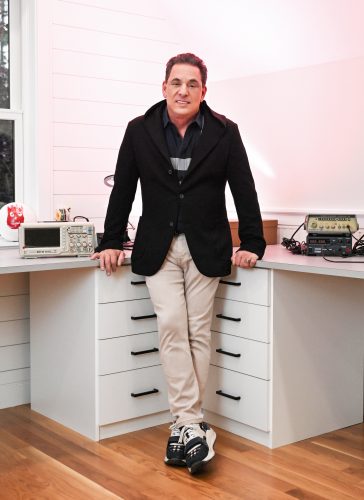
‘Greener and Leaner’ Trading
HPR isn’t slowing down when it comes to revolutionizing capital markets and electronic trading. In June, the company launched its Hypercube, a new hardware device that serves as the central component of the firm’s new “exchange of the future.”
The press release announcing the launch continues: “The new hardware-based matching engine technology outperforms current exchange architectures by a factor of 100 with a hardware package one-tenth the size. The HPR Hypercube device radically improves throughput and determinism … and is able to process the equivalent of a record-level, high-volume U.S. equities trading session, a complete six-and-a-half-hour trading day in approximately 10 minutes.”
Amicangioli says electronic trading is making capital markets more efficient, despite its naysayers. “There’s a lot of popular opinion out there that says electronic trading is gaming the market,” he says. “That’s not true. As markets have become more electronic, they are becoming more and more efficient. And that efficiency eventually squeezes out, I’ll call them, the middlemen that are inherent in the market.”
Hypercube’s ability to improve the latency —the speed— of trading is a massive leap forward. “HPR actually operates in the nanoseconds, technologically, but these exchange engines nowadays run at about 100 microseconds,” Amicangioli says. “With Hypercube, we’ve moved it down to about 5-10 microseconds.”
He also notes the small size of the hardware compared to other trading systems.
“Our technology folds 10-to-1 in the footprint in a data center,” Amicangioli says. “HPR has figured a way with this technology to fit about 10 times more computing power per cubic inch. That’s greener and leaner, and it sets us apart.”
Not only that, but Hypercube also promises to ease the strain on markets when there’s volatility or a high-volume day for whatever reason. “When something really bad happens and there’s a monumental volatility day, you tend to find markets slowing down. They’re having trouble keeping up at that speed,” he says. “With our technology deployed, the markets can hold up perfectly well under extraordinary conditions.”
That last phrase — “hold up well under extraordinary conditions” — describes not only HPR’s success but also encapsulates Amicangioli’s career. From working-class beginnings to a fascination with engineering and a passion for entrepreneurship, and finally to finding success in his passion, Amicangioli has earned the respect of both employees and peers.
“There’s a triangle that makes up the best businessperson: the leader, the architect, and the accountant,” he says.
“Usually the architect is creative, doesn’t want to hear about schedules, and just wants to come up with ideas. The accountant, on the other hand, cares about deadlines, and budgets, and dollars. And then there’s the leader, who isn’t afraid to make the final decisions. I drove very hard to round out those capabilities in my career. At HPR, we’re always looking for people who maximize those three sides of the triangle.”



